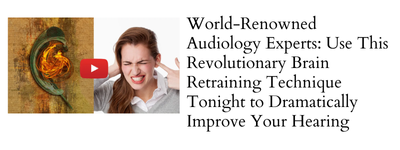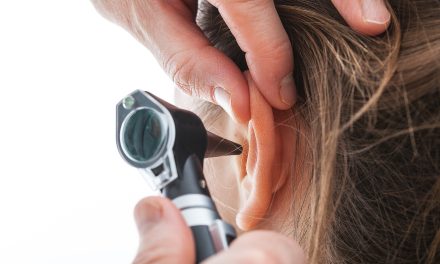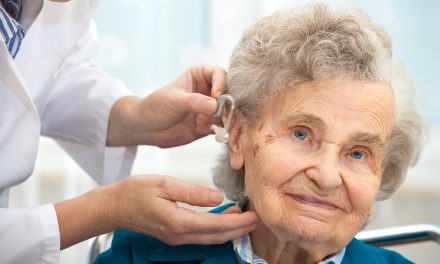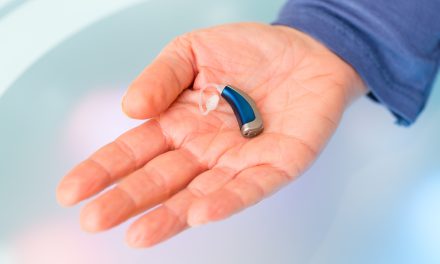Tinnitus, characterized by the perception of sound where no external source is present, affects millions of individuals worldwide. For many, this condition is not just a minor annoyance, but a significant disruption that impacts their quality of life. Traditional treatments vary, but in recent years, hearing aids have emerged as a potential source of relief for some sufferers of tinnitus. These devices can play a critical role in the management and alleviation of the condition by amplifying external sounds, thus making the internal noise less noticeable.
While not all hearing aids are designed with tinnitus management in mind, certain models and features are specifically aimed at helping those who experience this condition. Integration of sound therapy functions, noise cancellation features, and the ability to customize the auditory experience make hearing aids a valuable option for tinnitus sufferers. Moreover, with advancements in technology, hearing aids have become more sophisticated, offering a range of options for users to find a device that fits their specific needs. Quality of life can be significantly improved as individuals regain the ability to focus on external sounds, engage in conversations, and participate more fully in their daily activities.
Key Takeaways
- Hearing aids provide relief for tinnitus by amplifying external sounds.
- Advanced hearing aid features are tailored to manage tinnitus symptoms effectively.
- Proper assessment, fitting, and technology can enhance the quality of life for those with tinnitus.
Understanding Tinnitus
Tinnitus is a common condition characterized by the perception of noise or ringing in the ears when no external sound is present. It can manifest as a ringing, hissing, whistling, buzzing, or clicking sound and can vary in pitch and intensity. The experience varies greatly among individuals and can be either temporary or chronic.
Causes of Tinnitus:
- Exposure to loud noises
- Ear infections
- Build-up of earwax
- Age-related hearing loss
- Ototoxic medications
It’s important to note that tinnitus is not a disease but rather a symptom of an underlying condition. Anyone can experience tinnitus, but it is more prevalent among people who are exposed to loud noises regularly, such as musicians or construction workers, and among older adults.
Types of Tinnitus:
- Subjective Tinnitus: Heard only by the individual.
- Objective Tinnitus: Noise caused by bodily functions in the ear area that can be heard by others.
To diagnose tinnitus, healthcare providers may conduct a series of hearing tests, examine the ear, and review the patient’s medical history. Although there is no cure for tinnitus, there are management strategies that can help lessen its impact:
- Hearing aids
- Sound-masking devices
- Therapy for underlying health conditions
- Tinnitus retraining therapy
Understanding tinnitus is pivotal, as it affects quality of life and can lead to frustration and stress. By recognizing its characteristics and seeking appropriate management, individuals can find ways to cope with the condition effectively.
Basics of Hearing Aids
Hearing aids are small electronic devices that individuals wear in or behind their ears. These devices amplify some sounds, making it possible for individuals with hearing loss to listen, communicate, and participate more fully in daily activities.
Types of Hearing Aids:
- In-The-Ear (ITE): Custom molded and fits in the outer ear.
- Behind-The-Ear (BTE): Sits behind the ear and directs sound into the ear.
- In-The-Canal (ITC): Less visible, fits partly in the ear canal.
Key Components:
- Microphone: Picks up sound from the environment.
- Amplifier: Increases the loudness of sounds.
- Speaker: Delivers the amplified sound into the ear.
Hearing aids can be analog or digital, with digital models providing more sophisticated sound processing capabilities. They can be adjusted for volume and sometimes frequency to better suit the user’s specific hearing loss pattern.
Adjustments & Settings:
- Volume control to adjust loudness as needed.
- Programmable settings for different environments, such as quiet places or crowded rooms.
- Directional microphones to focus on the sound coming from in front of the wearer, helpful in noisy environments.
Power Sources:
- Traditional disposable batteries.
- Rechargeable batteries, increasing convenience for users.
Hearing aids require regular maintenance to perform optimally, such as daily cleaning and battery replacement or charging. It’s essential for users to consult with hearing care professionals to find the best device and achieve proper fitting and tuning.
How Hearing Aids Alleviate Tinnitus
Hearing aids can play a significant role in reducing the discomfort of tinnitus by amplifying environmental sounds and enhancing ear stimulation, which may help distract from the internal sounds of tinnitus.
Amplification and Masking Effects
Hearing aids improve the ability to hear external sounds, which can make tinnitus less noticeable. By amplifying background noise and other environmental sounds, hearing aids help to mask the ringing or buzzing that individuals perceive.
- Amplification: Increases volume of external sounds, making tinnitus less prominent.
- Masking: Provides a sound source that can distract from the tinnitus.
Improved Auditory Stimulation
Efficient auditory stimulation is crucial in tinnitus management. Hearing aids contribute to this by enhancing the detail and range of sounds the wearer can perceive, potentially reducing the focus on tinnitus.
- Auditory detail: Helps the brain to focus on nuances of environmental sounds.
- Range of sounds: Extends the spectrum of frequencies heard, which can shift attention away from tinnitus.
Hearing Aids and Sound Therapy
Hearing aids may offer integrated sound therapy options specifically tailored for tinnitus relief. These options generate therapeutic sounds that can help to desensitize the individual’s auditory system to the tinnitus.
- Integrated sound therapy: Uses noise generation or musical tones to alleviate tinnitus distress.
- Desensitization: Aims to gradually reduce the tinnitus’ perceived intensity and the negative reaction to it.
Types of Hearing Aids for Tinnitus
Hearing aids can significantly alleviate the symptoms of tinnitus by enhancing hearing and masking the internal sounds. Here are specific types of hearing aids designed to support individuals with tinnitus.
In-the-Ear (ITE)
In-the-Ear (ITE) models are custom-fit devices positioned directly in the outer ear. They are suitable for a range of hearing losses and often include advanced features for tinnitus management, such as sound generators that produce a steady, soothing sound to distract from the ringing or buzzing of tinnitus.
Behind-the-Ear (BTE)
Behind-the-Ear (BTE) hearing aids sit behind or on top of the outer ear with tubing that routes sounds down into the ear that attaches to an ear mold or earpiece. These devices are known for their power and versatility. They often come with dedicated tinnitus therapy settings, which can be used to emit white noise or other therapeutic sounds to help mask the tinnitus symptoms.
Canal Hearing Aids
Canal hearing aids are divided into In-the-Canal (ITC) and Completely-in-Canal (CIC) styles. They are the smallest and most discrete options, fitting partially or completely within the ear canal. Despite their size, many include tinnitus masking features that can be tailored to each individual’s needs, offering subtle background noise to draw attention away from tinnitus.
Features of Hearing Aids Beneficial for Tinnitus
Hearing aids offer several features specifically engineered to ease the symptoms of tinnitus. These features aim to alleviate the discomfort and improve the quality of life for those affected.
Tinnitus Maskers
Tinnitus maskers are integral to many hearing aids, utilizing a background sound to minimize the perception of tinnitus. This sound may be white noise, pink noise, or other soothing sounds, which help to distract the user’s attention from tinnitus.
Notch Therapy
Notch therapy targets the specific frequency range of the user’s tinnitus tone. By reducing the amplification of the tinnitus frequency range without affecting the overall amplification profile, notch therapy aims to make tinnitus less noticeable over time.
Frequency Shifting
Lastly, frequency shifting slightly alters the pitch of frequencies that coincide with the individual’s tinnitus symptoms. The shifted sounds are moved into a range where the hearing loss is less profound, which can help to lessen the prominence of tinnitus.
Assessment and Fitting of Hearing Aids
The process of assessing and fitting hearing aids is critical for individuals with tinnitus. Initially, an audiologist conducts a thorough hearing evaluation to determine the nature of the hearing loss and the presence of tinnitus.
Key Steps in Assessment:
- Comprehensive hearing test to identify hearing loss levels.
- Tinnitus evaluation to understand the pitch and loudness of the perceived sound.
- Assessment of the impact of tinnitus on daily life.
Following the assessment, the audiologist recommends suitable hearing aid options. The type of hearing aid is based on the individual’s specific hearing loss profile and tinnitus characteristics.
Selection Criteria for Hearing Aids:
- Type of hearing loss (sensorineural, conductive, or mixed)
- Tinnitus frequency and intensity
- Lifestyle and dexterity considerations
Fitting involves customizing the hearing aids to the user’s needs, which includes setting the appropriate amplification levels. The hearing aids may include tinnitus masking features that generate sounds to reduce the perception of tinnitus.
Fitting Procedure:
- Personalization of hearing aid settings based on the assessment.
- Real-ear measurement to ensure proper amplification.
- Tinnitus masker adjustment for comfort and efficacy.
Patients typically undergo a trial period where they can experience the hearing aids in various environments. Follow-up appointments are essential for fine-tuning and ensuring optimal benefit. Regular use of the hearing aids can lead to habituation, a reduction in the perceived annoyance of tinnitus.
Cognitive-Behavioral Therapy and Hearing Aids
Cognitive-Behavioral Therapy (CBT) is an established psychological treatment that has been adapted to help patients with tinnitus. It focuses on changing negative thought patterns and behaviors associated with tinnitus to reduce distress and improve quality of life. Coupled with hearing aids, CBT can offer a more comprehensive approach to managing tinnitus symptoms.
Combining Treatments:
- Hearing Aids: Amplify external sounds, which can mask the ringing of tinnitus.
- CBT: Teaches coping strategies to handle the psychological impact of tinnitus.
Impact on Tinnitus:
- Reduces perceived loudness: Hearing aids can make external sounds more prominent, diminishing the focus on tinnitus.
- Alters reaction to tinnitus: CBT helps individuals reframe how they perceive and react to the presence of tinnitus in their daily lives.
Treatment Process:
- Assessment: A specialist evaluates the severity of tinnitus and any accompanying hearing loss.
- Fitting: Hearing aids are tailored to the individual’s audiological profile.
- CBT Sessions: Guided by a therapist, patients engage in multiple sessions to learn coping mechanisms.
CBT, when used in conjunction with hearing aids, has been shown to provide relief from the symptoms of tinnitus. Although it does not cure tinnitus, the dual approach can make the condition less intrusive and distressing. The effectiveness of this combination is well supported by clinical research, indicating a significant improvement in the day-to-day experiences of those affected by tinnitus.
Impact on Quality of Life
Hearing aids significantly enhance the quality of life for individuals with tinnitus. They can help to diminish the constant ringing in the ears that is characteristic of tinnitus by amplifying ambient sounds, thus making the tinnitus less noticeable. Over time, this effect can lead to a decrease in stress and anxiety which are often associated with persistent tinnitus.
Individuals using hearing aids also report improved social interaction. They can engage in conversations more easily, which reduces the feelings of isolation or withdrawal that can be caused by hearing difficulties. Enhanced communication often leads to better relationships, both personally and professionally.
In addition to the social benefits, there is also a marked improvement in concentration and cognitive function in tinnitus sufferers using hearing aids. The device’s capacity to mask tinnitus noises allows sufferers to focus more effectively on tasks without being constantly distracted by the ringing or buzzing in their ears.
Another critical aspect is the improvement of sleep patterns. Tinnitus often disrupts sleep, but hearing aids can reduce the impact of tinnitus on rest, leading to better overall health and well-being.
The use of hearing aids also instills a greater sense of independence. Individuals find themselves able to handle daily living activities with greater ease and confidence.
Key Benefits of Hearing Aids for Tinnitus Sufferers:
- Reduction in tinnitus perception
- Decreased stress and anxiety levels
- Enhanced social engagement
- Improved concentration and cognitive abilities
- Better sleep quality
- Increased sense of independence
Technology Advancements in Hearing Aids
Recent years have seen significant innovation in hearing aid technology, which has greatly enhanced their effectiveness in managing symptoms of tinnitus. Digital hearing aids now come with sophisticated sound processing algorithms specifically tailored to address the varied needs of individuals experiencing tinnitus.
Key developments include:
- Sound Masking: Modern devices incorporate sound masking features which generate white noise or other sounds to help distract from the ringing caused by tinnitus.
- Programmability: They are highly programmable, allowing for customization of settings to match the specific hearing profile of the user.
- Smart Connectivity: Wireless technology enables hearing aids to connect with smartphones, TVs, and other devices, allowing users to stream sound directly into their hearing aids.
Recent models also boast the following enhancements:
- Rechargeability: The shift to rechargeable batteries for longer use and convenience.
- Directional Microphones: Improved spatial hearing by using directional microphones.
- Noise Reduction: Advanced noise reduction capabilities help to make speech clearer in noisy environments.
These technological advancements have significantly increased the utility of hearing aids for individuals dealing with tinnitus. By blending ambient sounds with the tinnitus noise, sufferers often experience a reduction in the perceived intensity of the tinnitus, thereby improving their overall quality of life.
Choosing the Right Hearing Aid
When selecting a hearing aid for tinnitus management, individuals should consider several key factors to ensure optimal support and comfort.
Type of Hearing Aid: Different styles include behind-the-ear (BTE), in-the-ear (ITE), and completely-in-canal (CIC) devices.
- BTE aids are suitable for most types of hearing loss and are generally easier to handle.
- ITE aids are custom made to fit within the outer ear and can be easier to use with the phone.
- CIC aids are nearly invisible, which might be preferable for aesthetics.
Features:
- Tinnitus masking: Some hearing aids offer a tinnitus masking feature that emits sounds to distract from the ringing.
- Volume control: Adjustable volume settings can help manage the amplification of sounds.
- Directional microphones: These improve the ability to hear in noisy environments.
Comfort: The hearing aid should fit comfortably. An audiologist can help customize the fit to the wearer’s ear shape.
Trial Period:
- Most providers offer a trial period, which allows users to test the hearing aid in different environments.
Budget: Costs vary and usually align with the range of features a hearing aid offers.
- Basic models are more affordable but may have fewer features.
- Advanced models include more features but are typically more expensive.
Individuals must consult with a qualified audiologist to discuss their specific needs and to ensure the hearing aid is programmed correctly for tinnitus relief. An audiologist’s expertise is crucial in finding the right balance between features, comfort, and price.
Maintenance and Care for Hearing Aids
Proper maintenance and care of hearing aids are crucial for their optimal performance and longevity. Hearing aid users should establish a routine for daily care to ensure their devices function effectively, thereby providing consistent support for managing tinnitus symptoms.
Daily Cleaning: Users should gently wipe the surface of the hearing aids with a soft, dry cloth to remove earwax, dirt, and moisture. It’s important to avoid using water, cleaning solvents, or alcohol, as these can damage the device.
Wax Filters: The hearing aids’ wax filters protect the speaker from earwax buildup. They should be checked and replaced regularly to prevent blockages that can impair sound quality.
Moisture Control: To minimize damage from moisture, a drying container or dehumidifier can be utilized overnight. This is especially beneficial for individuals living in humid climates or those who perspire heavily.
Battery Care:
- Hearing aid batteries should be stored at room temperature.
- The battery compartment should be opened at night to allow air circulation and prevent corrosion.
| Activity | Frequency |
|---|---|
| Earwax Removal | Daily |
| Filter Replacement | As needed |
| Deep Cleaning | Monthly or as directed by a hearing professional |
Professional Maintenance: Routine professional cleanings and check-ups are recommended. Hearing care providers can perform thorough cleanings and any necessary adjustments.
Users must familiarize themselves with their specific hearing aid model’s care instructions as practices may vary. By adhering to these care guidelines, individuals can maintain the effectiveness of their hearing aids in the management of tinnitus.
Frequently Asked Questions
This section addresses common inquiries regarding the use of hearing aids for tinnitus relief, focusing on practical considerations and the latest treatment options.
What factors determine the time it takes for hearing aids to alleviate symptoms of tinnitus?
The time it takes for hearing aids to alleviate tinnitus symptoms depends on the individual’s hearing loss severity, the type of tinnitus, the fit and quality of the hearing aid, and the user’s adaptation period.
Are there affordable options available for hearing aids designed to help with tinnitus?
Affordable options for hearing aids tailored to assist with tinnitus are available, including basic digital models that offer sound masking features, though prices and features can vary widely.
What are common issues encountered when using hearing aids to manage tinnitus?
Users may experience issues such as feedback, discomfort, inadequate tinnitus masking, or difficulty adjusting to the amplification when using hearing aids for tinnitus management.
Which models of hearing aids are considered most effective for tinnitus relief?
Hearing aids with advanced features like customizable sound therapy and frequency adjustments are often considered more effective for tinnitus relief, with brands like Oticon and Phonak frequently recommended.
Can over-the-counter hearing aids be an effective solution for tinnitus sufferers?
Over-the-counter hearing aids can be effective for some tinnitus sufferers, especially if they have mild to moderate hearing loss, but personal assessment and possibly consultation with a professional are essential for optimal results.
What are the latest advancements in tinnitus treatment as of 2023?
As of 2023, advancements in tinnitus treatment include developments in hearing aid technology such as AI-driven sound therapy, more personalized sound adjustments, and integration with mobile apps for better user control.
Conclusion
In conclusion, the advanced technology integrated into modern hearing aids offers promising solutions for alleviating tinnitus symptoms. This guide has highlighted the various ways in which hearing aids can provide relief, such as through sound therapy, masking features, and customizable settings. By leveraging these technological advancements and seeking guidance from audiologists or hearing healthcare professionals, individuals experiencing tinnitus can make informed decisions to effectively manage their symptoms and improve their overall quality of life. It is important to explore the available options, consider individual needs, and prioritize ongoing support to maximize the benefits of hearing aids in addressing tinnitus-related challenges.























